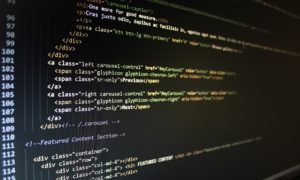“Hey John, are you going out tonight?” “Yes, what are you”…BAAM! According to the National Center for Statistics and Analysis, each day nearly 9 people are killed and approximately 1,000 are injured in accidents caused by a distracted driver. Whenever you are texting and driving you are taking countless seconds of attention away from your driving.
The national highway Traffic Safety Administration lists three types of distractions. Visual, which involves taking your eyes off the road; Manual, which involves taking your hands off the wheel; and Cognitive, which involves taking your mind off of driving. Texting while driving encompasses all three types of distractions. When texting, the brain is unable to focus on the important tasks involved with driving. Your vision should be directed to the road; your hands should be on the wheel controlling your car; and your mind should be concentrating on navigating and guiding your vision and manual functions. Taking focus away from these areas is the reason texting while driving is one of the leading causes of accidents.
Think of it this way, if you are driving at 55 miles per hour and take look down for 2.5 seconds, you will have traveled half the length of a football field. This can lead to accidents, injuries, and even death. Lawyers use the theory of negligence to help determine who is at fault for a car accident. One is negligent if he or she does not exercise the appropriate reasonable care in any given situation. The appropriate reasonable care is referred to as the standard of care, which can vary. The general standard of care, the one applied to general car accidents, is the reasonable person standard. This means, what would a reasonable person do in a similar circumstance.
When driving a car, the driver must drive with reasonable care. This means, the driver must obey the traffic laws; be aware of his or her surroundings; and avoid doing anything that could impair his or her driving abilities. This includes texting while driving. As stated above, texting involves the three main forms of distraction while driving. Choosing to distract yourself is choosing to impair your ability to drive. Thus, if you text and drive, and by doing so causes an accident, you will be negligent and liable for the injuries and damage incurred by the other party.
In today’s world, phone records are being used more and more by attorneys to help establish liability in car accidents. This information is considered private and was once felt to be protected, but over time has become easier to obtain. Because cell phone usage is so prevalent, if a witness sees you looking down, it is automatically assumed you are using a cell phone. This could be enough for the other party to obtain your phone records in order to see if you were using your phone at the time of the accident.
California’s Civil Discovery Act is very liberal. Section 2017.010 of the California Code of Civil Procedure states in relevant part, “Unless otherwise limited by order of the court . . . any party may obtain discovery regarding any matter, not privileged, that is relevant to the subject matter involved in the pending action….” In a car accident, the parties’ cell phone records can be extremely relevant in determining who is at fault or liable party. This type of evidence has lead to a new form of forensics termed Cellular Forensics.
According to Cellular Forensics, LLC, Cellular Forensics refers to the perseveration, extractions, and analysis of phone data from a mobile device. Each phone has it’s own digital DNA, which can be used to determine someone’s call history, text messages (including deleted ones), browser information, and a lot more. Cellular Forensics do not always need the physical phone to obtain and access evidence for a case. Many people these days will synchronize their phones with other devices such as tablets and computers. These phones are synced through third party services such as Apple ID and Google. Using these third party services, a Cellular Forensic scientist can obtain the phone’s call logs, Internet browsing history, and more. Thus, it is easy to see how the use of phone records has become more and more prevalent to help establish who is at fault in a car accident.
If you are involved in a car accident and believe it was due to distracted driving, it is important to consult with an experienced personal injury attorney to help educate yourself on the process. Make sure you do not discuss the accident with the insurance company before consulting with an attorney. You may not realize the information being asked of you is privileged and will be used against you to either diminish or possibly deny your claim.
Author: Brett Sachs
Attorney- California




















